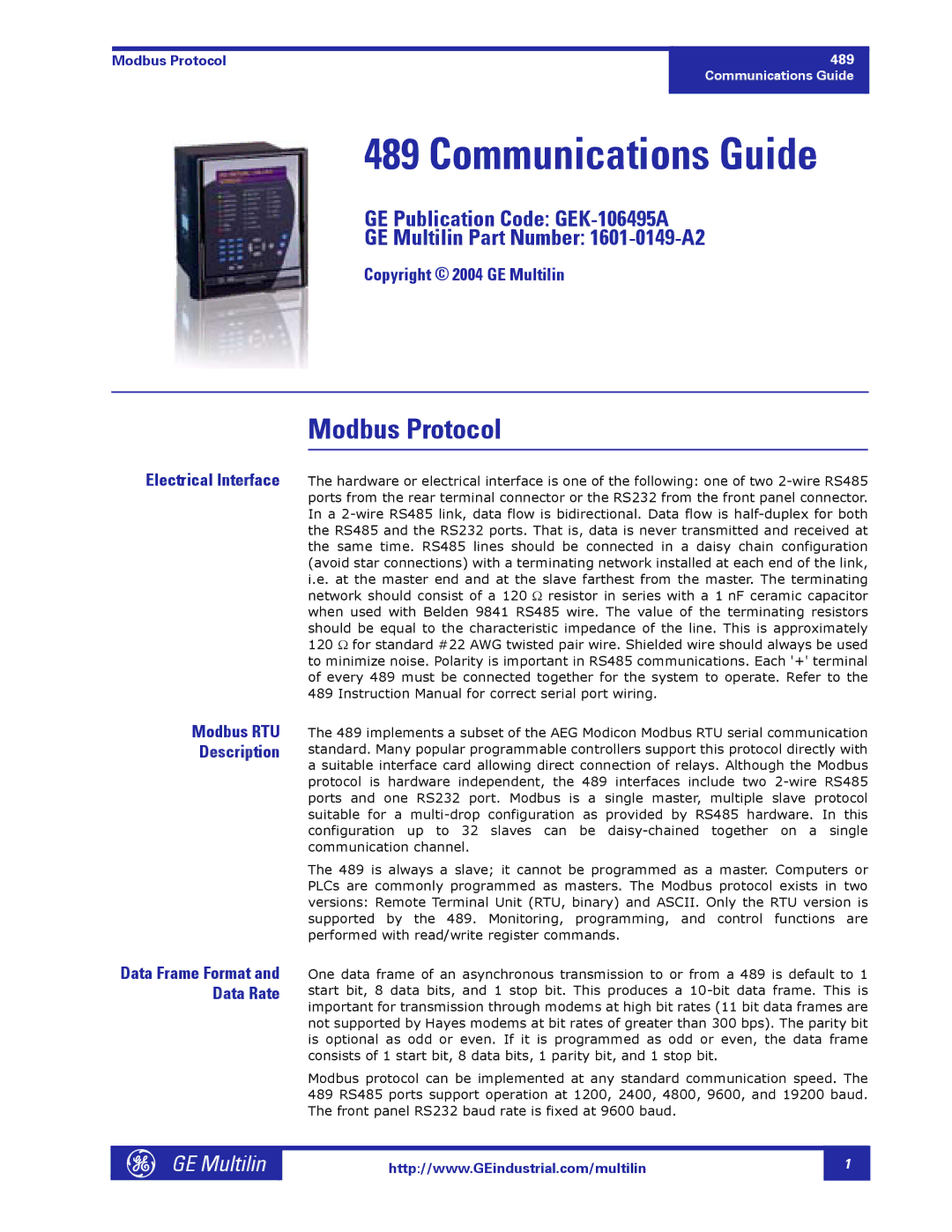The hardware or electrical interface is one of the following: one of two 2-wire RS485 ports from the rear terminal connector or the RS232 from the front panel connector. In a 2-wire RS485 link, data flow is bidirectional. Data flow is half-duplex for both the RS485 and the RS232 ports. That is, data is never transmitted and received at the same time. RS485 lines should be connected in a daisy chain configuration (avoid star connections) with a terminating network installed at each end of the link, i.e. at the master end and at the slave farthest from the master. The terminating network should consist of a 120 Ω resistor in series with a 1 nF ceramic capacitor when used with Belden 9841 RS485 wire. The value of the terminating resistors should be equal to the characteristic impedance of the line. This is approximately 120 Ω for standard #22 AWG twisted pair wire. Shielded wire should always be used to minimize noise. Polarity is important in RS485 communications. Each '+' terminal of every 489 must be connected together for the system to operate. Refer to the 489 Instruction Manual for correct serial port wiring.
The 489 implements a subset of the AEG Modicon Modbus RTU serial communication standard. Many popular programmable controllers support this protocol directly with a suitable interface card allowing direct connection of relays. Although the Modbus protocol is hardware independent, the 489 interfaces include two 2-wire RS485 ports and one RS232 port. Modbus is a single master, multiple slave protocol suitable for a multi-drop configuration as provided by RS485 hardware. In this configuration up to 32 slaves can be daisy-chained together on a single communication channel.
The 489 is always a slave; it cannot be programmed as a master. Computers or PLCs are commonly programmed as masters. The Modbus protocol exists in two versions: Remote Terminal Unit (RTU, binary) and ASCII. Only the RTU version is supported by the 489. Monitoring, programming, and control functions are performed with read/write register commands.
One data frame of an asynchronous transmission to or from a 489 is default to 1 start bit, 8 data bits, and 1 stop bit. This produces a 10-bit data frame. This is important for transmission through modems at high bit rates (11 bit data frames are not supported by Hayes modems at bit rates of greater than 300 bps). The parity bit is optional as odd or even. If it is programmed as odd or even, the data frame consists of 1 start bit, 8 data bits, 1 parity bit, and 1 stop bit.
Modbus protocol can be implemented at any standard communication speed. The 489 RS485 ports support operation at 1200, 2400, 4800, 9600, and 19200 baud. The front panel RS232 baud rate is fixed at 9600 baud.

